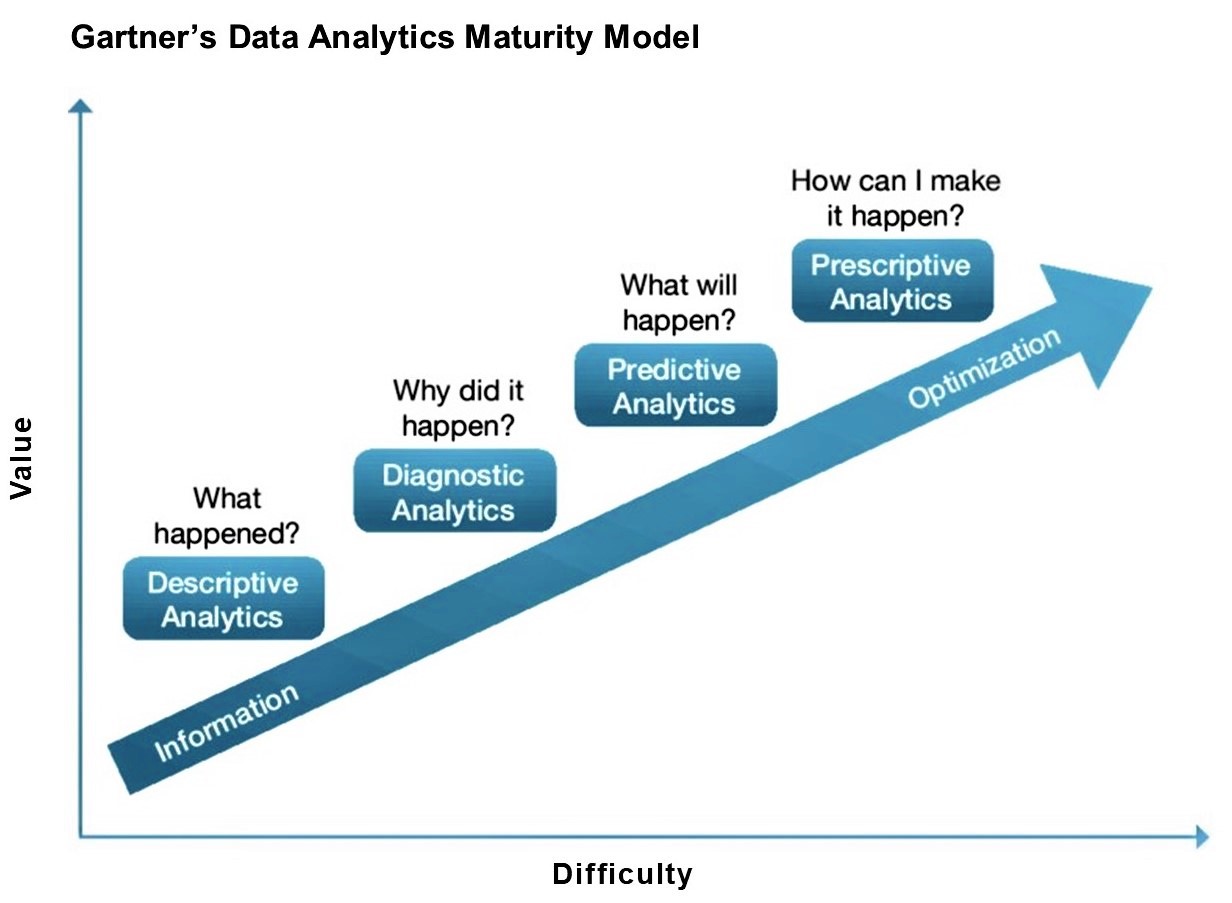 Predictive analytics are regularly used in marketing to create individual and relevant customer communication. It is a forecasting method that aims to determine future and unknown events by identifying repetitive patterns, e.g., in customer transaction data, that make it possible to deliver reliable projections. Therefore, the starting point for predictive analytics is always the largest and most meaningful amount of data available.
Predictive analytics are regularly used in marketing to create individual and relevant customer communication. It is a forecasting method that aims to determine future and unknown events by identifying repetitive patterns, e.g., in customer transaction data, that make it possible to deliver reliable projections. Therefore, the starting point for predictive analytics is always the largest and most meaningful amount of data available.
Comparisons
Gartner's diagram on the four phases of data analytics maturity shows that predictive analytics form the link between knowledge and prediction and deal with the question of what will happen. This clearly distinguishes them from so-called descriptive analytics, which deal with the analysis of what has happened, and diagnostic analytics, which consider the causes of these events.

In the next step, recommendations for action are given with the help of prescriptive analytics to influence the predicted development positively or negatively.
Requirements
Anyway, companies need to meet a few requirements to benefit from the advantages of predictive analytics: e.g., data quality is crucial for the success of the analytics project, because if the database is inaccurate, incomplete or out of date, an algorithm will simply come up with wrong results. That’s why a data audit should be carried out before implementing an analytics project to understand the data quality and to remedy any weaknesses. In addition, it is important to identify the available data sources and to make optimal use of all available information. These data sources can be, for example, the CRM system, web tracking tools, social media platforms, or purchase transactions. In the next step, it is recommended to link the identified data sources to a 360-degree customer view, as this provides a good basis for a customer-centric marketing strategy.
Finally, appropriate know-how, such as analytical skills, is required. By setting up your own data scientist team, these skills can be developed in-house, but this can be both time consuming and costly. Alternatively, external specialists can be called in. This enables a faster start and at the same time the development of internal competencies.
Prospects
Due to the increasing simplification of the usability of software, marketers without a technical or mathematical background are increasingly able to master tasks that could only be handled by IT and statistics experts a few years ago. In other words, with the so-called “democratization of technology”, more companies can benefit from methods such as predictive analytics and save costs – and this trend will only increase in the next few years.
In addition, it is foreseeable that artificial intelligence and thus also predictive analytics will become more and more decisive for marketing success. Companies that recognize this potential at an early stage and create the necessary conditions can benefit from it early one. For this reason, companies should develop plans to create the conditions described above and thus an optimal starting point for the use of predictive analytics.
With the democratization of marketing tools, every company today should be able to gradually build up its competencies and implement predictive analytics projects and then use this to gain competitive advantages in marketing.
By Daniela La Marca



















